Introduction
During lactation, nutritional requirements are used at a minimal rate for maintenance and they are mainly used toward milk production.

Furthermore, we know that the main component of milk is water, and therefore it is essential to provide sufficient water, while not forgetting, the amount of feed consumed of course.
During lactation, water consumption must be ad libitum, and monitoring must be done not only of its temperature, but also of the biochemical and microbiological quality, as well as the water flow in the drinkers.
Any lack of water or rejection of water due to lack of quality will have a direct influence on the production of the farm. This will affect aspects such as feed consumption, sow weight loss and piglet average daily gain of the piglets, among others.
Things to keep in mind
Water consumption pre-farrowing
As shown in Figure 1, we must pay attention to the pre-farrowing period. In this study, high water consumption was recorded during the days prior to farrowing, averaging 9 litres/day for the 3-5 days pre-farrowing, even reaching spikes of almost 18 litres of water on the day prior to farrowing. In addition, the graph shows that water consumption increases as the time of farrowing approaches, then drops, and increases rapidly in the four days post-farrowing.
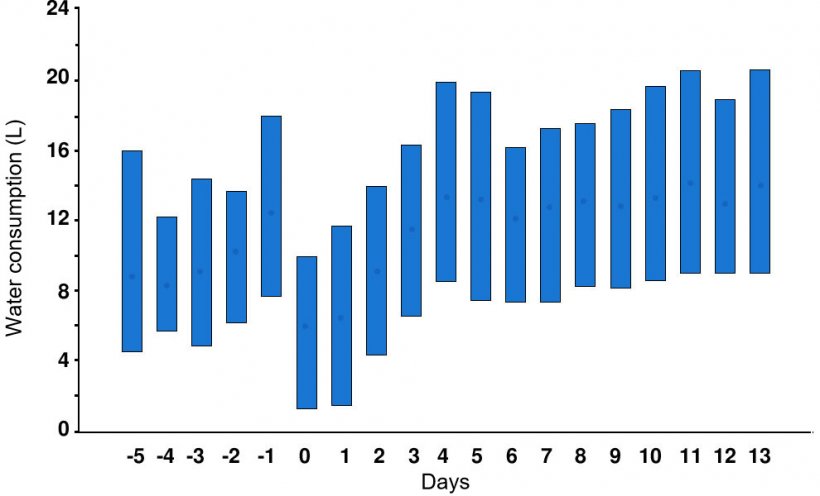
Water consumption during lactation
As mentioned before, it is essential to ensure water consumption by the sow. S. Kruse et al., in a 2011 study, saw how daily water consumption increased as lactation progressed, reaching an average water consumption of 27.5 litres/day during the lactation period. In this study, the second parity sows had the highest water intake.
A similar study was repeated in 2015 on a Nutreco owned farm, resulting in a similar pattern. On the day of farrowing, the sows consumed almost 15 litres per day, reaching almost 40 litres per day at the end of lactation (Figure 3). In addition, the pre-farrowing pattern coincides with that previously studied by Fraser & Phillips in 1989 (Figure 1).
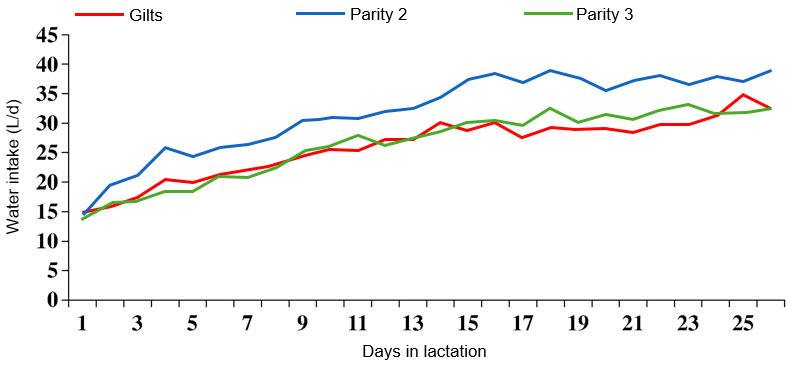
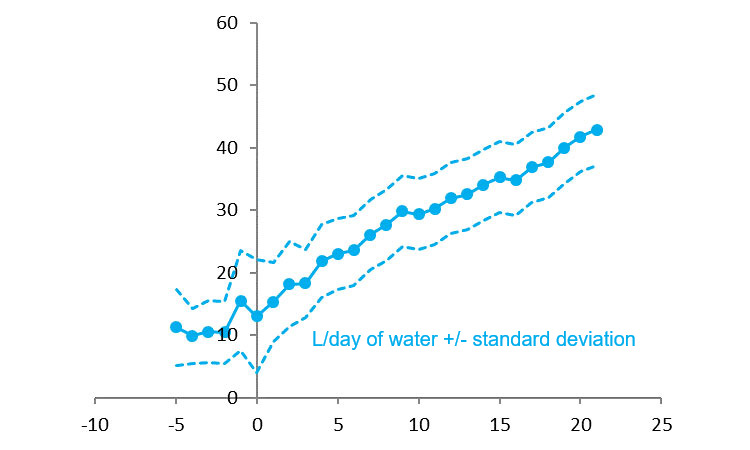
Without disregarding feed intake, remembering that a rapid increase in consumption during the first week of lactation is essential, the water:feed ratio must be taken into account.
This ratio decreases from the time of farrowing to one week of lactation, going from 7 to 4 litres of water per kg of feed. From this point on, the ratio increases slightly to remain practically stable; which may indicate that the sow's gastrointestinal tract has adapted to water consumption and feed intake. The average obtained in the study by S. Kruse et al. in 2011 was 4.9 liters of water per kg of feed.
Studies conducted at the Nutreco experimental farm in 2015 show the same curve as that obtained in the Kruse test in 2011. (Figure 4)
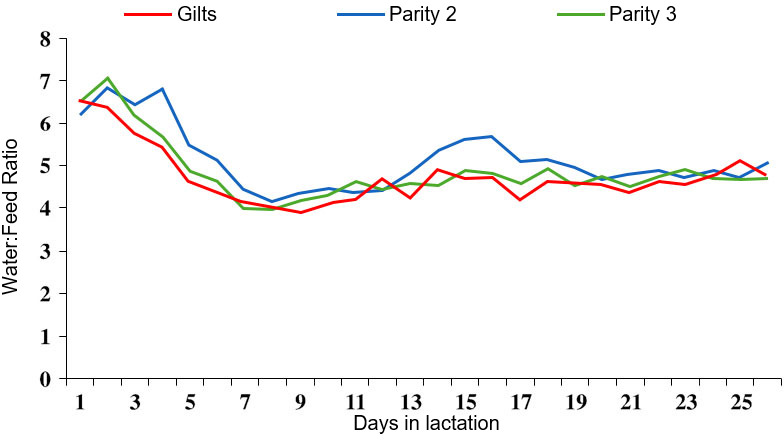

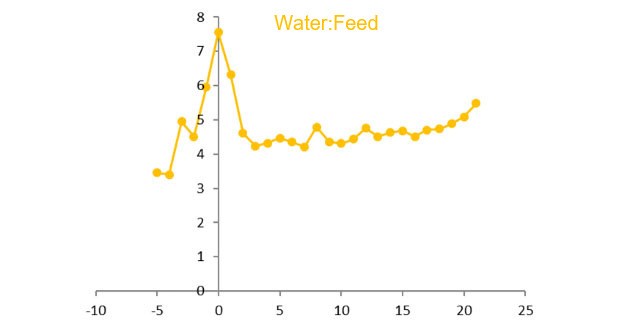
Consequences on the piglets and the sow
Fraser & Phillips, back in 1989, related water consumption to the average daily gain of piglets. A positive correlation was observed between sow water consumption during the first three days of lactation and the weight gain of the piglets (Figure 6). In addition, the same study observed that the sows that consumed less than 6 liters/ day of water saw the most piglet mortality in the first days of lactation (Fraser & Phillips, 1989).
For the sow, increased water and feed intake during lactation will result in less weight loss and have a positive impact on the next reproductive cycle.
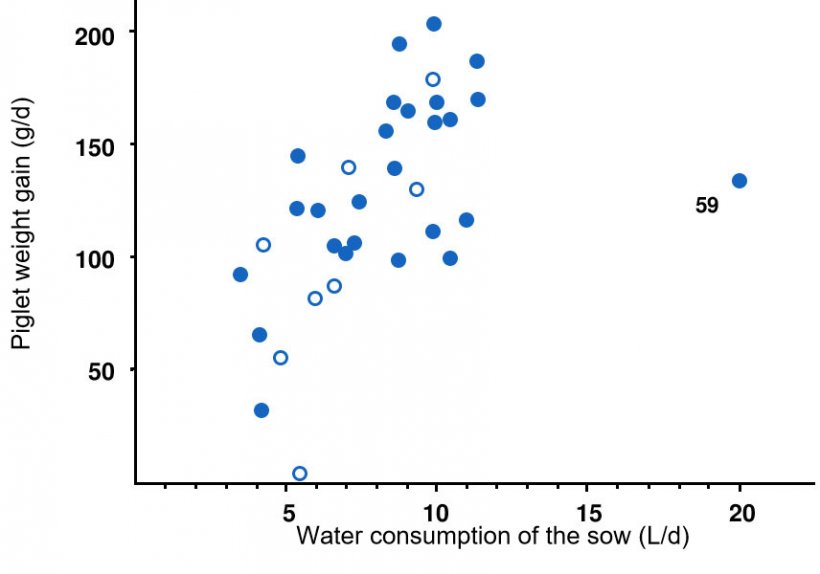
Conclusions
- It is essential to ensure sufficient water during the pre-farrowing period and during lactation.
- Do not forget the water:feed ratio; estimated on average at 4.9 litres of water per kg of feed during lactation.
- A good start to lactation, taking into account water consumption as well as feed intake, will have positive effects on the litter and on the sow body weight.



